STAR POST (Art)
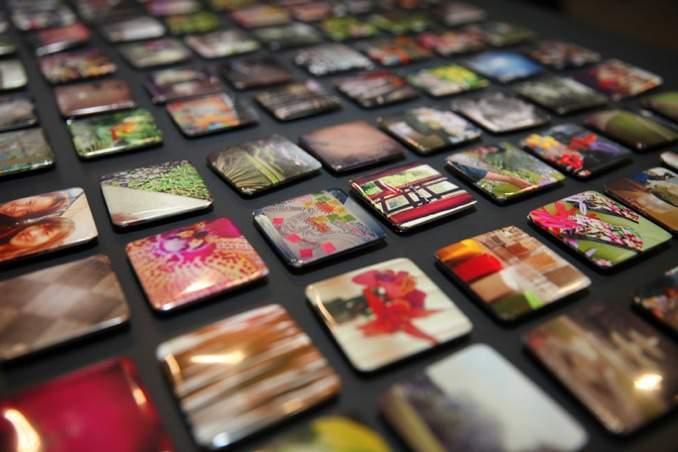
Singapore Teachers’ Academy for the aRts
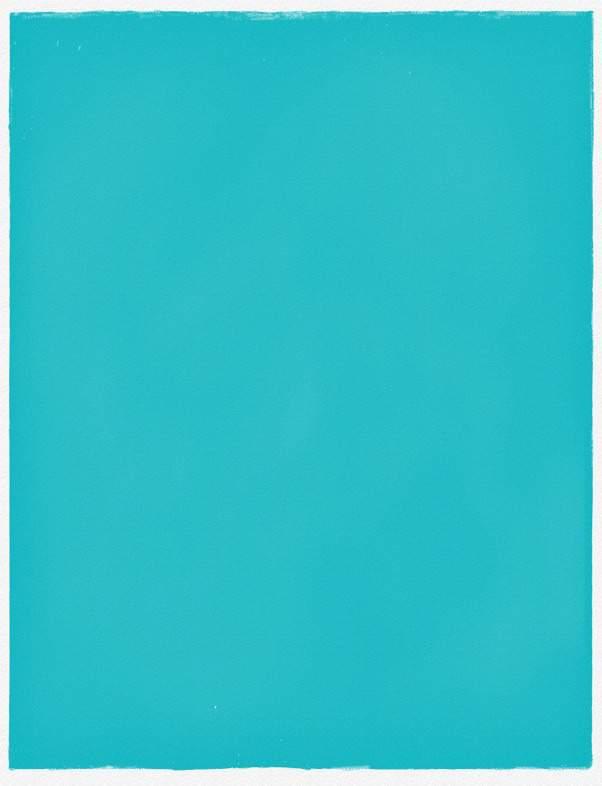


Singapore Teachers’ Academy for the aRts

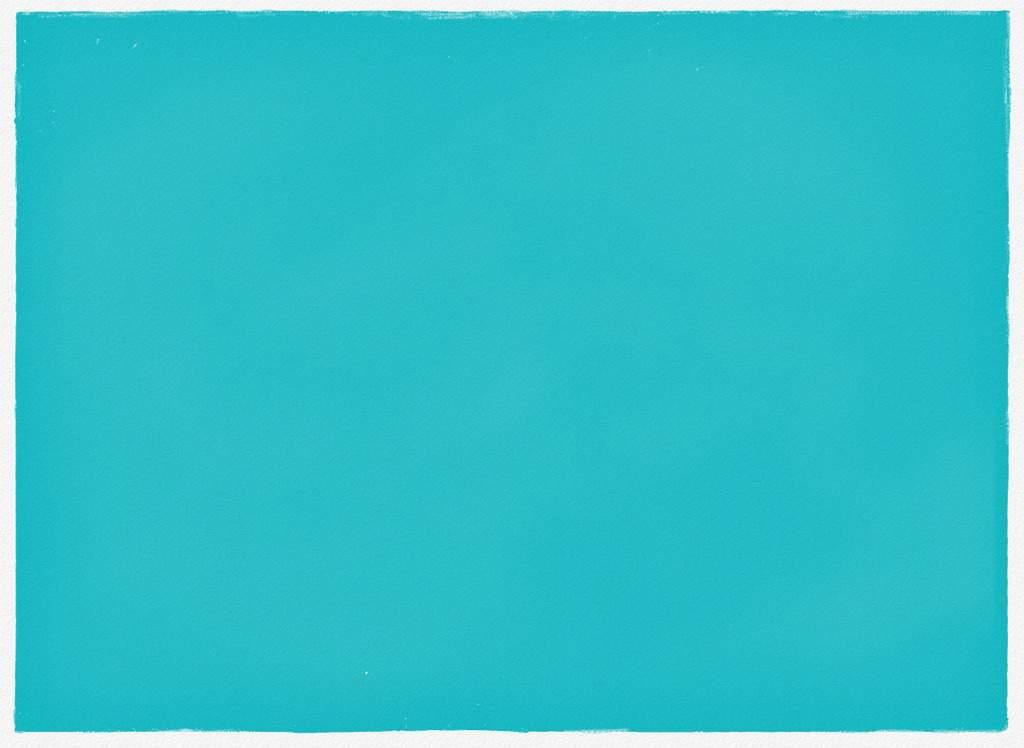
Making Good Art Teaching Visible A Glimpse into Student-centred and Context-Sensitive Art Classrooms
In Aug – Sep this year, 48 STAR Champions from primary schools put their student-centred art lesson units into visual presentations and exhibited them in four zonal Pedagogical Exhibitions, held concurrently with their Combined Clusters Art Workshops.

By Grace Kwa, Programme Manager, STAR and Lim Kok Boon, Programme Director, STAR
Creating pedagogical exhibitions is a way to build our understanding of what good teaching and learning might look like. Exhibitions that focus on classroom teaching and learning allow other teachers to see what is possible and reflect on possible extensions and application, building their capacity to teach as a result.
Pedagogical exhibitions emphasise the process of teaching and learning, more so than students' final artwork. The approaches or instructional strategies used are documented, alongside students' responses and teachers' own reflection for improved practices in future. These information are then organised, and selectively shown in a meaningful way –offering the viewer a glimpse into the participants’ classrooms and the space to envision one’s own art teaching practices. The displays are not mere recollection of the stages of their lessons but also included teachers’ own reflection for better practices which is just as valuable and informative.
If the purpose of exhibiting students' artwork is in part to celebrate participation and excellence, then a pedagogical exhibition celebrates reflective art teaching both for the participating teachers and the viewers - it forces us to look, think, feel and question.
Exhibitions when done well are effective in inspiring viewers to experiment with new strategies while prompting them to reflect on their own contexts and challenges. They serve as a powerful professional development tool, providing a context for further teacher inquiry that extends beyond a close group of colleagues and engage a wider audience of art teachers in conversation about teaching.

Ms Tan Ee Peng shared a lesson unit on ‘My Enchanted Forest’ where her P4 students created an imaginary forest scene using collage. Her exhibition revealed the careful scaffolding that build up to the students’ final task.


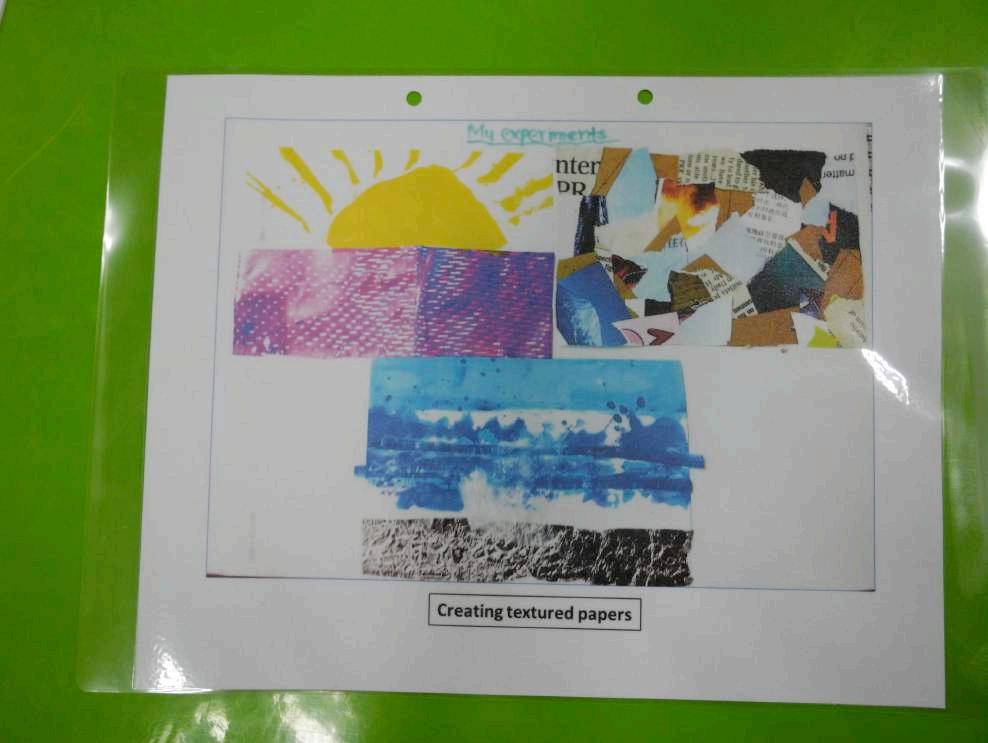
Ms Tan also shared that as students were initially not confident to cut out their shapes without any pencil marks, it
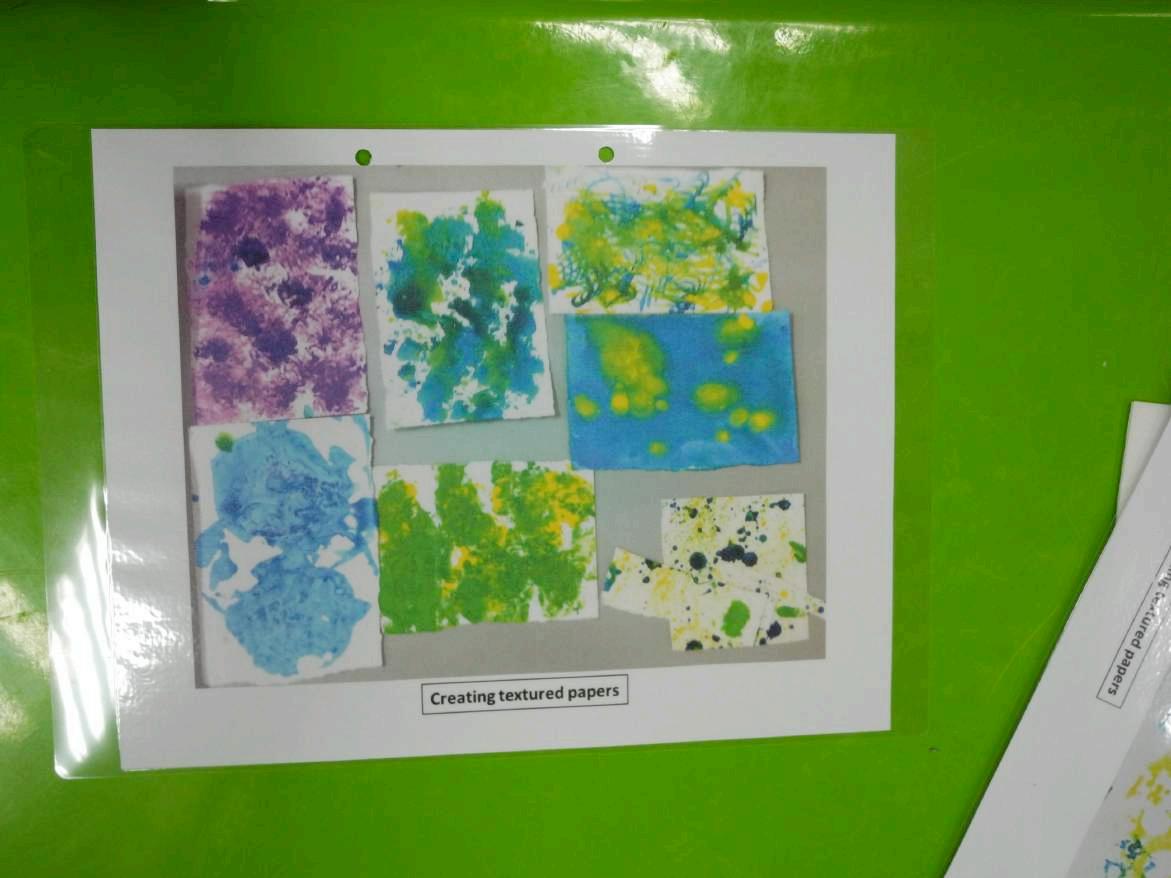
order to make refinement for future practices. While some decisions made could be intuitive initially, having them recorded allowed her to clarify her own thinking processes. Taking time to document her students’ works and having them do reflections at mid-point also enabled her to see their progression and understand some of the learning areas her students could be better supported.


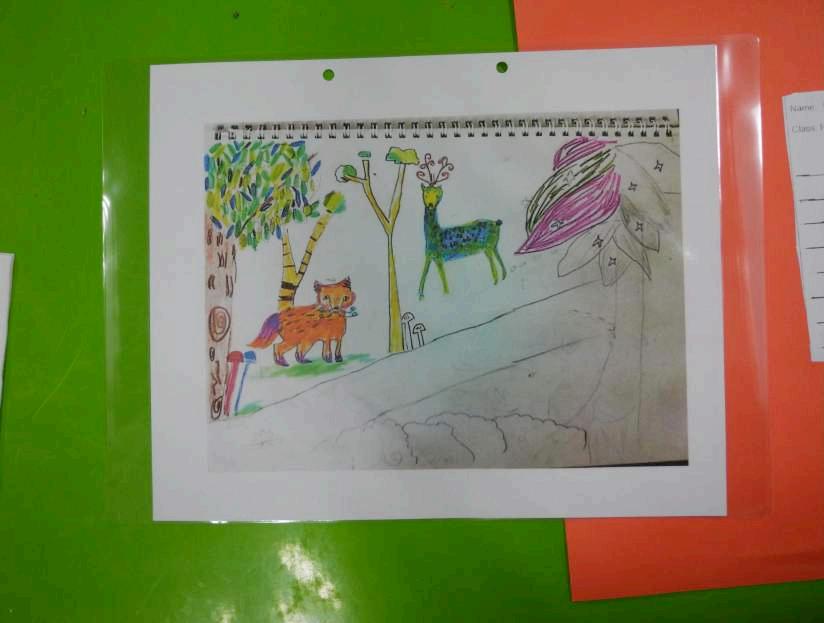
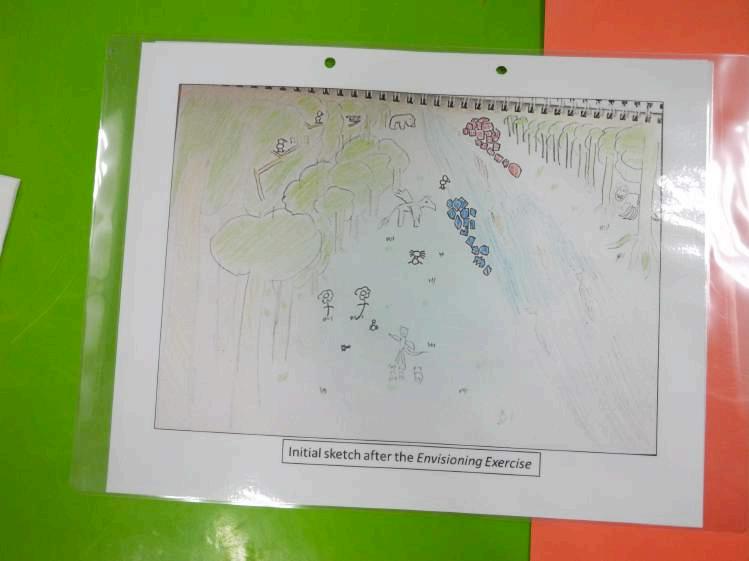

For the viewers, the pedagogical exhibition also led them to reflect on their own art lessons and generated robust dialogues amongst teachers, triggering their inspiration and sparking off more ideas.
Some teachers who viewed this exhibit were thinking of carrying out a similar lesson unit; Ms Tan’s exhibit provided some ideas as to how they could design their own lessons. They shared that Ms Tan’s personal reflection also pre-empted some of the challenges their students might face – this allowed them to avoid some possible problems.
A couple of them also pointed out that samples of draft sketches, although bearing varying degrees of resemblance, were mostly quite different from the final works. They felt that the evolving process of one’s ideas in artmaking could be harnessed upon, where the teacher could facilitate students’ reflection to help them better understand the decisions they

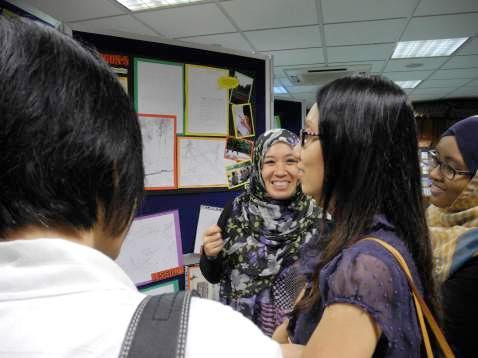
For example, in some cases, certain subject matters were enlarged in the final work while they look inconspicuous in the drafts. This could be as a result of student wanting to create emphasis. In another work, a student showed perspective when drawing a river in his/her draft, yet in the final work, the perspective idea was abandoned. This could be due to an inability to present an overall landscape in perspective, and the task was made even more challenging as students had to ‘draw’ using their scissors. Understanding the thinking behind these decisions could highlight learning points for the rest of the class as well as inform the teacher on subsequent lesson designs that would raise students’ competencies.
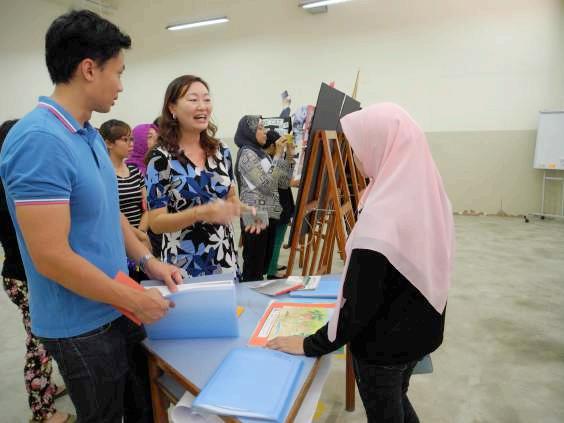
Another teacher even commented that perhaps students could test out some ideas by shifting the different pieces of paper around and then recording these trials with photography to inform one’s final decision rather than sticking the various parts down immediately.

STAR will be displaying 10 exhibits taken from the various zones at Malan Road Campus in Jan 2014, look out for more details to catch the second run of this pedagogical exhibition! Another STAR Champion’s exhibit is also featured in this issue under ‘Lesson Ideas’ – do check it out.
Literature Review Thinking, Learning and Talking About Art

Lesson Ideas Thank You!
Interview
Catching Up with Dr Hickman

By Lim Kok Boon, Programme Director, STAR
This essay explores theories, research and practice surrounding thinking, talking and learning about art. This essay outlines the literature on classroom talk on art, allowing readers to realise the importance of facilitating meaningful classroom interaction, the role of effective questioning strategies and pedagogical nuances required for different classroom contexts. Practices related to discussion, dialogues, critiques, conversations, and question-and-answer to advance learning of art will be shared. This essay is not intended as a non-empirical research or comprehensive critique on the topic; instead, it hopes to provide broad scholarly ideas on the topic, serving as the groundwork leading to the pedagogical resources that Singapore Teachers’ Academy for the aRts will be developing.
The phrase art discussion is often used loosely to describe teacher and student talk on art in Singapore schools. From a syllabus text perspective, Art Discussion is a vital component that complements Art making to deepen students’ learning of art. It is a lesson structure that teachers could use to “engage students in the processes of observing, thinking and talking about their visual environment and artworks” (CPDD, 2008, p. 11). At the primary level, students learn to describe, analyse, interpret and evaluate visuals in different art forms. At the lower secondary level, students learn to discuss artists’ statements and intents, perspectives of art across time and culture, and style (CPDD, 2008, p. 18). At higher levels, students could discuss more complex themes and art media, in order to critically appraise artworks and artists critically to inform their own artistic growth and artworks. In the upper Secondary art syllabuses, students are also expected to discuss art in writing. The syllabus Study of Visual Art content dictates covering a minimum number of artworks by different artists categorised by themes, and teachers often exceed these over the course of four to five years.
Besides the syllabus document’s explanation of what Art Discussion might be, it would be appropriate to consider how Art Discussions are implemented and received in Singapore Schools. Anecdotally, a significant number of art teachers in
primary schools regard formal analysis, or “Feldman’s Method of Art Criticism”, synonymous with Art Discussions. Students are often led to respond sequentially to describe, analyse, interpret and evaluate of a chosen visual stimulus. While this approach is structured and useful to introduce art criticism, relying on formal analysis alone quickly becomes repetitive, uninteresting and disengaging. Often, closed-ended questions on elements and principles of art are asked. In encouraging instances, teachers departed from formal analysis and asked open-ended general or essential questions; modelled good questions and appropriate responses, and built on students’ response to generate a lively discussion. As uninitiated students engage in open, guided interpretive dialogue, they gain beginning level understandings about aesthetic qualities and the specialised vocabulary to describe them. Elsewhere, art educators are also convinced of the importance of providing
opportunities for children to talk about and make art, in order to understand art, creative thinking and creative processes (Barrett, 1997; Ecker, 1973; Hamblen, 1984a; Korn, 2007; Mittler, 1980; Richardson, 1982).


Research has shown that talk, by which children and adults communicate verbally, is the most important tool for guiding the development of understanding and jointly constructed knowledge (Mercer and Hodgkinson, 2008; Vygotsky, 1986; Wiggins and McTighe, 2006). In the context of school, learning through discussion and dialogue is rooted in cognitive theories of learning or social constructivist interpretations of how we learn. From Vygotsky’s study of thought and speech, we may conclude that the process of talk could form thoughts, and every thought “moves, grows, and develops, fulfils a function, solves a problem” (Vygotsky, 1986). Explaining things out loud could prove useful for the individual to re-assess a situation, make connections between things and past experiences and solve problems. From Wiggins and McTighe (2006), an evidence of understanding is through explanation—a statement or account that makes something clear—which could be verbally communicated. However, what we know about the world is not gained only through thinking and talking, but through all senses and multiple intelligences (Gardner, 2011).

Therefore thoughts and ideas might also be communicated through visual-spatial, logical-mathematical, musical or bodily means.
Alexander (2001) analysed different methods and strategies experienced teachers use to lead classroom talk. Though art teachers were not the focus in Alexander’s seminar Five Cultures research, his analysis of classroom discussions are applicable to art classrooms today. Alexander advocates making classroom talk dialogic, collective, reciprocal and supportive. This way, teachers encourage the exchange of ideas, active listening, build on students’ answers and get students to do the same. To make classroom talk meaningful, Alexander suggests that teachers focus on three broad aspects of pedagogical interaction: organisation, teaching talk and learning talk. To retain the original persuasive tone, the following four sub-paragraphs quote and paraphrase Alexander’s original text at length (Alexander, 2005, pp. 102-105).
By organising interaction, teachers conducts and facilitates:
• Whole class teaching
• Collective group work
• Collaborative group work
• One-to-one teacher-student activity
• One-to-one student-to-student activity
By teaching talk, it was observed that teachers in five countries of his study primarily use:
• Rote in that teacher drills facts and ideas;
• Recitation in that teacher repeatedly questions to test or stimulate the recall of what was taught; and
• Instruction/exposition in that teacher tells students what to do; imparting information, and/or explaining facts, principles or procedures.
Productive talk is more likely to be grounded in:
• Discussion in that teachers and students exchange ideas with a view to share information and solve problems; and
• Dialogic in that the class achieves a common understanding through structured, cumulative questioning, and discussion which guide and prompt, reduce choices, minimize risk and error, and accelerate learning of concepts over time.
To learn to talk, opportunities need to be provided for students to experience and master the following abilities:
• Narrate
• Explain
• Instruct
• Ask different kinds of question
• Receive, act and build upon answers
• Analyse and solve problems
• Speculate and imagine
• Explore and evaluate ideas
• Discuss
• Argue, reason and justify
• Negotiate
• Listen
• Be receptive to alternative viewpoints
• Think about what they hear
• Give others time to think
By claiming that teaching is dialogic rather than transmissive, Alexander proposed dialogic teaching that is:
• Collective in that teachers and children address learning tasks together, whether as a group or as a class;
• Reciprocal in that teachers and children listen to each other, share ideas and consider alternative viewpoints;
• Supportive in that children articulate their ideas freely, without the fear of embarrassment over ‘wrong’ answers, and help each other to reach common understandings;
• Cumulative in that teachers and children build on their own and each others’ ideas and chain them into coherent lines of thinking and enquiry; and
• Purposeful in that teachers plan and steer classroom talk with specific educational goals in view.
Alexander’s proposition allows us to deconstruct quality interactions in classrooms that facilitate students’ verbal responses in art. While teachers and students naturally talk in their art classrooms, not all conversations are purposeful, focus on art learning or about art at all. In the context of being truly student-centred, teachers would have to offer individually tailored responses to guide students’ thinking forward. In most circumstances, facilitating reflective thinking and quality peer responses would relieve the teacher to provide individual responses in every instance. Besides individual conversations, studio critiques offer opportunities for group learning, and teachers could facilitate group conversations that deepen art learning.

Critiques as a unique type of Art Discussion
Studio critiques are often college-level sessions in art schools where students and tutors hold public conversations on student artworks. In our classrooms, Studio critiques are formal class
discussions and reflections on students’ artworks. Through conversations, the teacher and student focus on an informal, temporal display of students’ artworks that are completed or in progress. These conversations can be open, inclusive, esoteric, free form, or free falling (Elkin, 2012). In schools, they could also be called Critical Discussions (Barrett, 1997) or Critiques (Hetland et al., 2007). In the context of Studio Thinking, Critiques are instructional platforms students learn to describe, analyse, interpret and evaluate artworks and foster Studio Habits of Mind such as Develop Craft, Engage and Persist, Envision, Express, Observe, Reflect, Stretch and Explore, and Understand the Art World (Hetland et al., 2007). Through Critiques, students can learn and practise giving and receiving feedback. Critiques are most effective if participants can engage in intentional and purposeful observation and open dialogue—being open-minded, and be willing to be surprised by constructive feedback. Other than classroom critiques on student artworks, teachers and students also engage in formal or informal conversations on art.

General art classroom conversations
Researchers have found that quality interactions of guided looking, talking and reflecting on works of art help students grasp relationships between art making and their consequences; and encouraged participation and developed
thinking skills (Armstrong, 1993; Herz, 2010; Tauton, 1983, 1984; Wilson and Clark, 2000).
Talking about art with students serves different purposes at different stages of work (Szekely, 1982, Hefeli, 1998). Mary Hefeli’s 1998 case study delved into how teachers decided what to say to students and how and when to approach them as they are working in class. When teachers asked questions or made suggestions, they were “steering dialogues towards thoughtful, artistically authentic, pedagogical outcomes” (Hefeli, 2012). These questions or suggestions could be on materials, processes, meaning or on learning. She found that teachers and students hold complex conversations on student artworks, and such negotiations can be used to foster broader dimensions of artistry, reflective thinking and make thinking visible.
In the context of Hafeli’s case study, individual teacher conversations with students could evoke student ownership of their work. This is done by eliciting ideas, confirm by repeating, confirm by acknowledging, encouraging exploration and inviting reflection through verbal and non-verbal means. From the teacher-informant in Hefeli’s study, asking questions or eliciting a student response allow the teacher to “figure out where students are at…getting students to do or think a little bit more”. Such individual conversations and good teacher-student-

rapport aided the students to develop their own ideas and own judgment.
In his study of conversations in the art class, Szekely (1982) found students and teachers engaged in more non-art related conversations (routine, attendance, announcements, discipline and clearing up) than art-related conversations. In art-related conversations, teachers and students could talk about art in the following categories:
• Art vocabulary (definitions, names of tools, name of techniques, artists’ names et al);
• Art materials (where these are kept, purchased, and nature of use);
• Media and techniques (instructions, and safety tips):
• Art demonstrations (techniques, media, tool usage, materials and processes); and
• Creative processes (discussion of artists’ and students’ works, ideas and reactions to art experiences).
Talking possibly serves the following stages to complement art making:
1. Before working could help students to plan, rehearse and visualise what students want to make; finding resonance
from the reaction of teachers and peers can build selfconfidence;
2. During working, it helps to reflect-in-action, slowing down and gaining control and understanding of media and techniques to fulfil a particular artistic purpose;
3. After working, it helps reflect-on-action, sharing with others common concerns such as gaps between initial intent and result, and alternative solutions.
At all stages, verbalisation helps students put thoughts into more concrete form so that they can be recalled and use later.
The two research studies suggest that art classrooms were more teacher-centred when teacher talk and more non-art related conversations occupied a larger proportion of lesson time. Shifting directive teaching styles to focused, organised, inquiry-based lessons could result in dialogic teaching. Wellconstructed teacher questions that guide student inquiry contributes to students’ grasp of concepts, eventual efficient and self-directed learning (Armstrong, 1993). This is consistent with Packard’s study (1973) that reported little difference in time taken (as opposed to time given) to complete an artwork well even though more time was spent on productive talk. Effective questioning strategies, or planned questions, may therefore be useful to initiate verbal interaction that result in the positive student behaviours mentioned above.
Questioning is an important aspect of teaching and learning. Asking and responding go on in classrooms throughout the day. Questioning is done in classrooms to assess learning, instruct, manage the learning environment and promote cognitive and emotional engagement (Sapier et al, 2008, p. 206). A question

make meanings clear, question assumptions, consider various viewpoints, and to monitor discussions and their own thinking (Paul, 1993).
In Let’s talk About Art (STAR, 2013) pedagogical resource for art teachers, several methods for framing questions were suggested. These include:
• Hamblen’s Questioning (Hamblen, 1984b) that connects art criticism to Bloom’s Taxonomy;
• Socratic Questioning (Paul, 1993) that can be used to explore ideas in depth;
• Questions that facilitate reflection on art making (Hurwitz et al., 2003);
• Question formulating techniques for students (Rothstein and Santana, 2011) that teach students to ask their own questions;
• Formal Analysis (Feldman, 1994) that analyses the form and style of an artwork;
• Interpreting Multiple Meanings where Subject Matter + Medium + Form + Contexts = Meanings (Barrett, 1993)

that encourages the viewers’ interpretation based on symbolic references within and outside of the artwork;
• 4R Approach (React, Research, Respond, Reflect) (Hickman, 1994) that scopes art looking with broader social activities; and
• Core Routines from Harvard Project Zero’s Visible Thinking (Project Zero, n.d.) that help students become more aware of their own thinking.
While these methods and suggested guiding questions are not exhaustive, teachers may use these to role model the use of questions to drive genuine inquiry, thinking and reflection in art.
It is hoped that these may form part of the teacher’s pedagogical repertoire required for effective and engaging teaching. From a discipline perspective, they may instill thinking dispositions that lend themselves well to professions related to art criticism, art history, and curatorship. From a broader educational perspective, they may hone observation skills, and foster transferable critical thinking and reflection.
Educators suggest different considerations to make questioning effective, depending on the context and student readiness. Questions could be used before, during and after the art


content and focus learning through essential questions (Wiggins and McTighe, 2006); aid and structure thinking (Project Zero, n.d.); they could be used to focus students’ observation and sharpen understanding in art (Barrett, 1993; Feldman, 1994; Hamblen, 1984); or they could be used to clarify, probe assumptions, draw reasoning, evidence, and different viewpoints (Paul, 1993). However, four broad student-

centric considerations are applicable in most settings to make the verbal interaction meaningful:
• Ask open-ended questions;
• Give enough ‘wait’ time;
• Give all students the opportunity to respond; teacher may appoint a student to start by offering a view or comment, and another student to respond to the first and another to respond to the second;
• Hold students accountable by expecting, requiring and facilitating their participation and contributions; teach students to ask questions; and
• Establish an open, honest, supportive classroom, and safe atmosphere for risk-taking.
Other than classroom settings, teachers and students might talk about art in museum and gallery settings. The question frames described above can easily be used to guide thinking, looking and talking about works of art in the art museum. In a largescale study of art museum field trips, Greene, Kisida and Bowen (2014) found that enriching field trips contribute to students’ civic literacy, critical-thinking skills, historical empathy,
social tolerance, and good taste for art and culture. Museums provide a conducive environment to view, think, feel and talk about art. Looking and talking about art in these settings prizes the aesthetic encounter with the physical art object, as compared with looking at an image reproduction. The aesthetic and sensorial experience of viewing a physical object is likely to exceed that of viewing an image of the object. This unique experience then serves as a stimulus for meaningful discussion and dialogue.
Thinking through the writing process
Embarking on writing clarifies thinking and writing communicates thoughts to other people. As an instructional method, writing is frequently perceived to improve critical thinking, and in some instances, denote critical thinking. Writing requires the writer to translate something visual into language. To be able to communicate a response to an artwork, students must be observant and conversant, using appropriate art vocabulary to provide a clear and cogent description. By using the writing process of prewriting, drafting, revising and proofreading (Henry, 2009), students can discover, organise and record information in response to an artwork. To some extent, writing is a form of self-talk. Through writing in response to reflective questions, prior knowledge, attitudes, values and beliefs may be revealed and re-evaluated.

Writing about art enables students to deepen their seeing and knowing. “Writing … can be seen as the exploration of thought” (Francis, 2009). Through creative writing processes which incorporate fun, exploration, experimentation, development, reflection, memory, experience, visual metaphors” (Francis, 2009, p. 16), writing adds depth, and personal meaning to how an artwork might be understood. Writing might also slow down looking, requiring the viewer to return to the artwork for more detailed observation. Writing helps students record their aesthetic experiences. Writing is known to facilitate critical and reflective thinking. A question recorded about an artwork documents the student’s curiosity, excitement and wonderment about ideas and emotions raised by an artwork which they could revisit later. Writing also facilitates students’ sharing their thoughts and opinions with one another.
While the impact of learning through writing is largely positive, its effects on learning are inconsistent (Klein, 1999). This is also dependent on the learner’s competency in the written language —vocabulary and grammar—and its effectiveness presumably grows with the learner’s command of the language. For writing to have an impact on learning, researchers suggest that teachers should use various teaching strategies which include using graphical organisers, teaching talk, and informal writing. Notwithstanding, writing strategies are often accompanied by
other pedagogical interventions and measuring the impact of writing alone might be unproductive.
Inundating students with a barrage of questions is unlikely to promote meaningful talk for effective learning. From Alexander, the teacher must consciously organise and teach talk, and provide ample opportunities for students to practise talk. A safe and inspiring environment for learning must be present for dialogic teaching to take place. For learning to be meaningful, the school art curriculum should embody enduring ideas in art, key concepts and essential questions, balanced with student needs and interest, upon which lessons, activities and assessment can be based. Authentic inquiry experiences can provide valuable opportunities for students to improve their understanding of art contexts, and artistic practices. The writing process and affiliated writing strategies can be used to complement classroom talk. From a time pragmatic perspective, maximising participation in whole-class talk is challenging and group-based learning is necessary to overcome this. Decentralised student-student talk would be beneficial to increase opportunities for verbal interaction and exchange of ideas. Meaningful dialogues within the classroom can be cultivated over time.
In the context of Singapore art classrooms, teachers can begin to gain a better perspective of their students’ understanding of art by paying more attention to the quality of talk in the art classroom. The fluency and momentum to use questioning strategies effectively and facilitating students’ responses built on another person’s response depends on the teachers’ prior experiences and readiness. Teachers must find restraint to listen, observe, read body language and empower students by valuing, and articulating the value of students’ voice. Teachers need to listen and show respect for classroom talk built on trusting teacher-student relationships. By ensuring that students can articulate and show their awareness of their thinking about art, students can be primed to discover, explore and learn art in exciting and creative ways.
Afternote: STAR is developing “Let’s Talk About Art” Teaching Kit for Primary Schools that suggest practical steps to help art teachers develop effective classroom interactions and meaningful Art Discussions. More information will be available next year.

References
Alexander, R. (2001). Culture and pedagogy: international comparisons in primary education. Oxford: Blackwell.
Alexander, R. (2005). Culture, dialogue and learning: notes on an emerging pedagogy, in Mercer, N. and Hodgkinson, S. (Ed.) (2008). Exploring talk in school. London: Sage.
Armstrong, C. (1993). Training in an art production questioning method on teacher questioning and responses, Studies in Art Education, 34(4), Summer, 1993, pp.209-221.
Barrett, T. (1993). Interpreting art: reflecting, wondering, responding. McGraw-Hill.
Barrett, T. (1997). Talking about student art. Worcester, MA: Davis.
Burton, J. Hafeli, M. (Ed.). (2012). Conversations in art: the dialectics of teaching and learning. Reston, VA: NAEA.
Ecker, D. (1973). Analyzing children’s talk about art, Journal of Aesthetic Education, 7(1), pp.58-73.
Elkin, J. (2012). Art critiques: a guide (2nd Ed.). Washington, D.C.: New Academic.
Feldman, E. B. (1994). Practical art criticism. Prentice-Hall.
Francis, P. (2009). Inspiring writing in art and design: taking a line for a walk. Bristol: Intellect Books.
Klein, P. (1999). Reopening inquiry into cognitive processes in writing-tolearn, Educational Psychology Review, 11(3), September 1999, pp. 203-270.
Gardner, H. (2011). Frames of Mind: The Theory of Multiple Intelligences. (3rd Edition). New York: Basic Books.

Greene, J., Kisida, B. & Bowen, D. (2014). The educational value of field trips, Education Next, 14(1), accessed 23 October 2013 from http:// educationnext.org/the-educational-value-of-field-trips/
Hamblen, K. A. (1984a). "Don't you think some brighter colors would improve your paintings"- or constructing questions for art dialogues, Art Education, 37(1), pp.12-14.
Hamblen, K. (1984b). An art criticism questioning strategy within the framework of bloom’s taxonomy, Studies in Art Education, 26(1), Autumn 1984, pp.41–50.
Hickman, R. (1994). A student-centred approach for understanding art, Art Education, 47(5), pp.47-51.
Hefeli, M. (2012). Knowing when to step in and when to step back: “Reading” students as developing painters, in Burton, J. Hafeli, M. (Ed.). (2012). Conversations in art: the dialectics of teaching and learning. Reston, VA: NAEA.
Henry, D. (2009). Writing matters: process and practice. LongmanPearson.
Herz, R. S. (2010). Looking at art in the classroom: art investigations from the Guggenheim museum. New York: Teachers College Press.
Hetland, L. Winner, E., Veenema, S. & Sheridan, K. (2007). Studio thinking: the real benefits of visual arts education. New York: Teachers College Press.
Hurwitz, A., Madeja, S. & Katter, E. (2003). Pathways to art appreciation: a source book for media & methods. Reston, VA: NAEA.
Korn, R. (2007). Solomon R. Guggenheim Museum teaching literacy through art (executive summary and discussion). Alexandria, VA: Randi Korn & Associates. Accessed 9 Oct 2013 from http:// www.guggenheim.org/images/lta/pdfs/ Executive_Summary_and_Discussion.pdf
Mittler, G. (1980). Learning to look/looking to learn? A proposed approach to art appreciation at the secondary school level, Art Education, 33(2), pp.17-21.
Mercer, N. and Hodgkinson, S. (Ed.) (2008). Exploring talk in school. London: Sage.
Packard, S. (1973). Creative tempo in children's art production, Studies in Art Education, 14(3), pp.18-26.
Paul, R. (1993). Critical thinking: how to prepare students for a rapidly changing world. Foundation for Critical Thinking.
Project Zero (n.d.). Visible Thinking Core Routines. Accessed 27 October 2013 from http://www.old-pz.gse.harvard.edu/vt/VisibleThinking_html_files/ 03_ThinkingRoutines/03c_CoreRoutines.html
Richardson, A. S. (1982). Art means language. Art Education, 35(5), pp. 10-12.
Rothstein, D. & Santana, L. (2011). Make just one change. teach students to ask their own questions. Harvard Education Press.
Sapier, J., Haley-Speca, M., & Gower, R. (2008). The skillful teacher: building your teaching skills. Research for Better Teaching.
STAR (2013). Let’s talk about art: teaching kit for art teachers. Singapore: Ministry of Education.
Stokrocki, M. (1986). A portrait of an effective art teacher, Studies in Art Education, 27(2), pp.82-93.
Tauton, M. (1993). Questioning strategies to encourage young children to talk about art, Art Education, 36(4), July, 1983, pp.40-43.
Tauton, M. (1994). Reflective dialogue in the art classroom: focusing on the art process, Art Education, 37(1), January, 1984, pp.15-16
Vygotsky, L. (trans. and ed. by Alex Kozulin). (1986). Thought and Language. MIT Press.
Wiggins, G. and McTighe, J. (2006). Understanding by design (2nd Ed.). Alexandria, VA: ASCD.
Wilson, T. & Clark, G. (2000). Looking at and talking about art: strategies of an experienced teacher, Visual Arts Research, 26(2), pp.40-50.
Zander, M. (2003). Talking, thinking responding and creating: a survey of literature on talk in art education, Studies in Art Education, 44(2), Winter, 2003, pp.117-134.
ii. The national curriculum takes a broad view of what constitutes as art. From the examples cited in syllabus documents, these products include paintings, sculpture, prints, photographs, film and animation, and graphic design. From an administrative, upper secondary national examinations perspective, the categories of art span close to 40 different art forms. It would be safe to say that school teachers have a certain autonomy to define what art is, and select appropriate artworks and artefacts by established artists or students, as a stimulus to bring their students into the world of art.
iii. For a survey of literature on talk in art education, see Zander, M. (2003). Talking, Thinking, Responding and Creating: A Survey of Literature on Talk in Art Education, Studies in Art Education, 44(2), pp. 117-134.
iv. These three teaching talk could also be referred to as Monologic, where direct instruction or unidirectional transmission of knowledge is mutually exclusive to dialogic.
v. In simple terms, dialogic means ‘pertaining to dialogue’, as ‘conversation and inquiry’, or using dialogue to help teach explicit reasoning and the construction of curriculum knowledge. For a more developed and elaborate explanation, read Alexander, R.J. (2008) Towards Dialogic Teaching: rethinking classroom talk (4th edition), Dialogos.

i. Lesson structure refers to organised learning activities or tasks within a given lesson period.
vi. For a more thorough explanation of essential questions, see Wiggins, G. (2007). What is an Essential Question? Accessed 27 October 2013 from http://www.authenticeducation.org/ae_bigideas/article.lasso? artid=53
By Juliana M Tahar, Woodlands Ring Primary School
Edited by Grace Kwa, STAR


This lesson unit conducted for a group of Primary 6 students focused on developing a student-centred and context-sensitive approach to art teaching and learning. Students worked on the theme ‘Thank You!’ where they created art pieces for specific purposes of thanking special people in their lives as well as for sale where proceeds are donated to NKF for the Little Champs Programme.
I wanted to give my students the opportunity to make decisions, thus I began the unit by bringing to class four pieces of art works made by a student from Art Club and me. I posed this question to my students, “If you were given a choice to receive one of these artworks as a gift, which one would you choose? Why?”
Here are some students’ responses:
The green sculpture would be my choice because it looks unique and artistic to me. Even though it is made using paper, it is a great decorative piece.
Juliana Bte M Tahar Growth, 2013 Paper Sculpture
The rose would be my pick as it is small and easy to carry with me. It is also made of recycled newspaper.

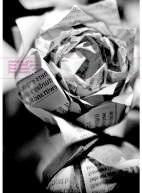
Unknown Artist (Received
I am attracted to the abstract art that shows different shades of purple as it is interesting and colourful.
Juliana Bte M Tahar Vibrance, 2013 Papercut & Paint
I would like to choose the self-portrait of the woman as I find it very special. It is made up of many different types of paper to form a woman’s face.
Nur Nadia Natasya, Art Club student
Treasured Memories, 2013 Paper Collage

Gaining the attention of my students with a personal question that mattered to them allowed me to understand them better. I also learnt that bringing the physical artworks to class generated a lot of interest - they were curious about how the origami lotus was put together by many pieces of folded paper and how the self-portrait seemed flat at one angle but looked 3D at times. Being tactile learners, my students could observe the artworks more closely such as through touch and looking at 3D objects in a 360˚ manner.


Students had to match each textured paper to one of the seven techniques introduced to them (cutting slits, quilling, tearing and pasting, folding, crumpling, piercing and weaving).
Scaffolding questions were posed to help my students to envision how certain effects can be created.
- How do you think this texture is achieved? Can you show it to me?
- What could have been used to create this texture? If the artist did not have the tool(s) you mentioned, what else could he have used to achieve the same texture?
- How are the textures similar or different from one another?
- Which method do you think is used to create the 4 different artworks?

Following this activity, I introduced students to a few artists known for working with paper. They include Jolis Paons, Yulia Brodskaya and Sher Christopher. I
used I See / I Think / I Wonder and Looking: Ten Times Two, two Artful Thinking routines to guide students in observing the artworks. A last component of this art appreciation required students to look at and feel the different types of textured paper in their plastic pockets as they were matching them to an artwork by Sher Christopher. This allowed students to think about how the various techniques for manipulating paper could come together to create an attractive art piece.
The Elegant Task
Create a gift for someone in class, in pairs or groups of three, using any of the techniques shared earlier (i.e. folding, quilling, tearing, cutting slits, weaving, piercing, crumpling)
Enabling Constraints
Artwork needs to:
- be made from one piece of newspaper
Each group was given one additional constraint to up the challenge!
- remain flat or as a low relief (Additional Constraint 1)
- remain intact as one piece of paper (Additional Constraint 2)
- be 3-dimensional (Additional Constraint 3)
- be disintegrated (Additional Constraint 4)
By setting enabling constraints, my students were challenged to work together and think of creative solutions to transform the seemingly uninteresting newspaper into meaningful gifts for the people they care about. I could see my students stretching themselves and exploring the techniques shared during the
lesson rather than simply resorting to what they already knew or are comfortable with.
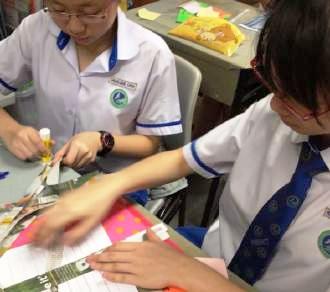

A student is keeping her artwork flat or as a low relief by using techniques like tearing and weaving. (Additional Constraint 1)

Students ensured that their pieces of newspaper remain intact as one piece by folding. (Additional Constraint 2)
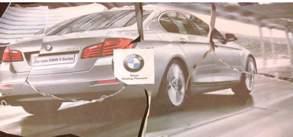
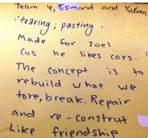
Artwork is made from newspaper that has been disintegrated.

Above: An artwork that has to remain flat


Right: Artworks that should be threedimensional

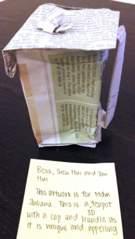

I began Lesson 2 by getting my students to recall and reflect on their art experiences for the previous lesson. I felt it was necessary for my students to be engaged in reflection on action at this point in time as it would help them set some personal goals for the next elegant task.
Art Club members are setting up a booth to sell recycled art to raise funds for NKF: Little Champs Programme.
Proceeds from the sale of these recycled artworks will help to purchase artificial kidneys for needy kidney patients.
You have been invited to contribute recycled art for sale to pupils and staff of Woodlands Ring Primary School
Art Club will provide you with newspaper only. You will have to source for other reusable items e.g. bottle caps and ring tabs, if you plan on adding them onto your artwork.
Your team must use at least three (3) methods shared in Lesson 1. Maximum size of your recycled artwork: A3
The groups were given time to discuss the task and decide on what they would like to create. Some guiding questions were posed to aid them in their decision making.

- What happens if you use a thicker pencil to quill? What else can you use to quill?
- Let’s look at the print on the newspaper. How can we make use of these colour differences to create interesting weaving effects?
- You wish to get strips of zig-zag lines, how can you cut more of such strips in a shorter time?
- You mention that the newspaper is quite flimsy and cannot stand upright. How can you strengthen it to create a stronger form?
- Who are your customers?
- What kind of recycled artworks do you think they would like to buy?
- What purposes or functions should the artworks serve?
- Are there any upcoming school or public holidays you can base your artwork on?
One of the most challenging but important part of the lesson was the period of time when my students were at work. I had to learn to know when to intervene and give effective feedback to my students and when to let them engage and persist. As I circulated around the class, it was important for me to pose questions that prompt them to explore themes and materials and provide alternatives to problem-solving for those who find it difficult to progress.
Here are some of my students’ final works which included functional newspaper artworks such as window curtain, stationery holders and wallet.


A concern I had for a number of teams was that the other reusable items such as the bottle caps and egg cartons had become the main material used, straying away from the initial intent which was to work with newspapers. I began to reflect on a number of things and asked myself several questions such as:
• If I had wanted my students to use newspaper and show the techniques of creating texture to newspaper in their artwork, should I have allowed them to use other reusable items like the egg cartons and plastic bottle caps in the first place?

• Was newspaper too limiting which resulted in students bringing in other recyclable materials like egg carton and plastic bottle caps? Newspaper is flimsy in nature and might not be a very appropriate material for certain techniques like quilling or even folding to create a 3D object. I could provide students more choices of papers (i.e. cardboard, newspaper, tissue paper and construction paper etc) so they could work with the different characteristics of paper to suit their purposes and intentions.
• Some students were too caught up with making functional items so that their items could be sold. I could have included a theme such as ‘Celebrations’ and ‘Joy of Giving’ to encourage students to create artworks using papers as materials rather than making functional objects that were more craft-like in nature.
Through conversations with my students, I was thrilled to learn that they had made personal connections to the art tasks, found the tasks meaningful and had an enjoyable art-making experience. The opportunities provided for them to make personal/team decisions increased engagement and the students felt a greater ownership towards their own learning. Through exploration, students made discoveries about various art materials and techniques. They exhibited curiosity and a greater willingness to experiment.
Dr Richard Hickman is Reader in the Faculty of Education, University of Cambridge, UK, and a Fellow of Homerton College. Dr Hickman is also one of the panelists for the ongoing PAM Research undertaken by STAR.

STAR: What do you look forward to every time you visit Singapore? Have you got a favourite haunt here?
RH: One of my favourite haunts in Singapore is Bukit Timah nature reserve... After about fifty paintings based on that place, I still get inspired by what is essentially a primary jungle. My more urban haunts include the Desker Road area off Serangoon Road for its vibrancy, authenticity and exotic sleaze, where there’s interesting people watching and you can get a Tiger beer for half the price of one at Holland Village. Of course, everyone says they look forward to the food in Singapore; as a vegetarian, I enjoy the range available, especially really hot South Indian food.
Elliot Eisner's ‘The Arts and the Creation of Mind’, which amongst other things, reminds us that art is not a 'below the wrist' activity.
Your thoughts about creativity please...
So much has been written about this subject over the years, actually adding little to human advancement. I defer to the words of Rusty the visionary dog:
I now turn to the question of creativity. I say ‘question’ in a rhetorical sense - there is no question; I would not be so naive as to pose a grand question such as ‘what is creativity’ and so vain as to attempt to answer it. Nevertheless, art of Humans and Dogs alike has become intrinsically bound up with the notion of creativity, and so I must at least make a passing comment: creativity cannot exist in a vacuum - it needs to be nurtured and cultured. A genuinely creative act is original but it is conducted within an appropriate context; the products of creativity are characterised by their innovativeness and their intrinsic quality. The Dog who merely splashes against a tree in an unusual manner is not engaged in a creative act, but one who carefully selects an appropriate site and makes unique and original choices with regard to the nature of his fluid, and who deploys it in a manner which acknowledges tradition while pointing to new vision is indeed being a creative artist.
What book would you recommend to all art teachers?

The creative act is often referred to as being related by some to a new way of seeing, understanding or doing, however, if I may refer to one of the many texts which I have assimilated (through close study of the insulation material of my immediate environment during my kennel bound years), there is ‘no new thing under the sun’ [1]. Nor would I ascribe the term ‘creative’ to a Dog for whom the supposedly creative act was new, (while being familiar to others) if that was the only criterion. Moreover, if novelty alone were to be considered sufficient for an act to be labelled ‘creative’, then simply performing a bizarre antic, such as balancing a bone on one’s nose would justify the term ‘creative’ being ascribed to that antic. I must point out however that there are those who would question whether creativity is a desirable trait at all, leading as it does to individualism and the consequent lack of social cohesion; as such, it has no place in schooling.
Extracted from ‘Arts, Culture & Education: A Canine Perspective’, conceived by Rusty ‘The Visionary Dog’, transcribed by Dr Richard Hickman
Can you share with us an impressive ICT-related art lesson that you had observed? How did the teacher harness technology effectively?
In Singapore, I was impressed by Mdm Fatimah’s ‘Appropriation’ lesson using Smart phones, as reported in a recent edition of STAR Post (Issue 3, 2013). In England I have been impressed by lessons that use a range of ICT strategies, such as animation to teach visual elements.
The first time I saw this was about ten years ago when a student teacher got his pupils to use an animation program to construct a photomontage of famous people, based on the tonal characteristic of their faces. The learning objective concerned ‘tone’ but the lesson activities were very far removed from the pencil-shading typical of many art lessons. The key thing with using ICT in art lessons is to use it appropriately. Often, there are missed opportunities when, for example the internet can be used to illustrate a particular concept, or a program such as Photoshop can be used to teach about principles of design or image manipulation.
However, there are times when traditional media offer a more rewarding learning experience. It is far better to see an actual art work from an unknown artist than a reproduction of a famous painting; it is also more meaningful for pupils to learn by actually engaging with a technique rather than experiencing ‘virtually’. New and emerging technologies are new tools in the art teacher’s kit, but we must be wary of being seduced by them!
Reflective practice is “a dialogue of thinking and doing, through which I become more skillful.”
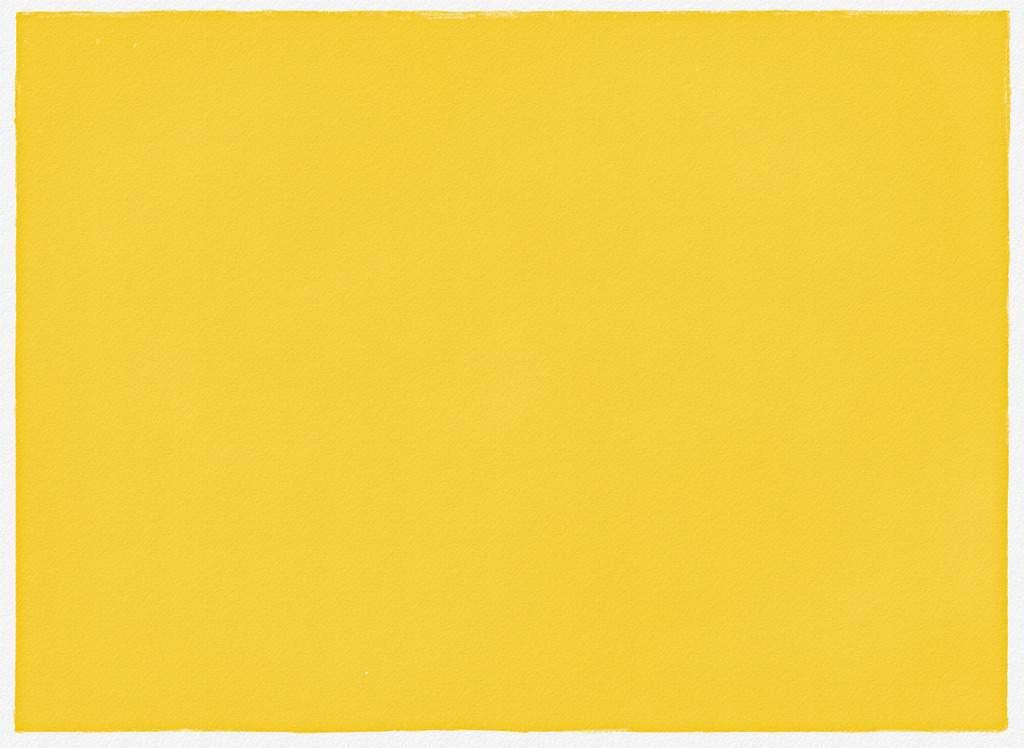
Donald A. Schön, The Reflective Practitioner: How Professionals Think in Action
on their Professional Development journey with STAR and their hopes for the future of Singapore’s
As STAR Champions coming together to put up a pedagogical exhibition and deliver a zonal art workshop, the process has been meaningful. I know I am not alone in this journey. Hearing the different ideas from various teachers has been enriching. We get to see how some student-centred art lessons such as learning in art museums, extensive exploration of art materials etc can be possible when planned properly. (Mr Wong Chee Kuen, Princess Elizabeth Primary School)
With the workshops at STAR and conscious application of learning, my perspective has definitely widened and I am able to increase my repertoire of skills set in designing a student-centred art lesson. The recording of my own lesson enabled me to reflect and modify it for subsequent classes. I made a conscious effort to include probing questions and opportunities for students’ reflection so that their voices can be heard!
(Mdm Hazel Chan, Fuhua Primary School)
The STAR Champions workshops gave us the opportunity to really make art, reignite our passion for artmaking and helped us to be more aware of infusing student-centred art lessons into our curriculum. I also got to network with other STAR Champions, sharing knowledge and working together, which is the most fruitful part of the journey. (Ms Dawn Sim, Poi Ching School)

reflect
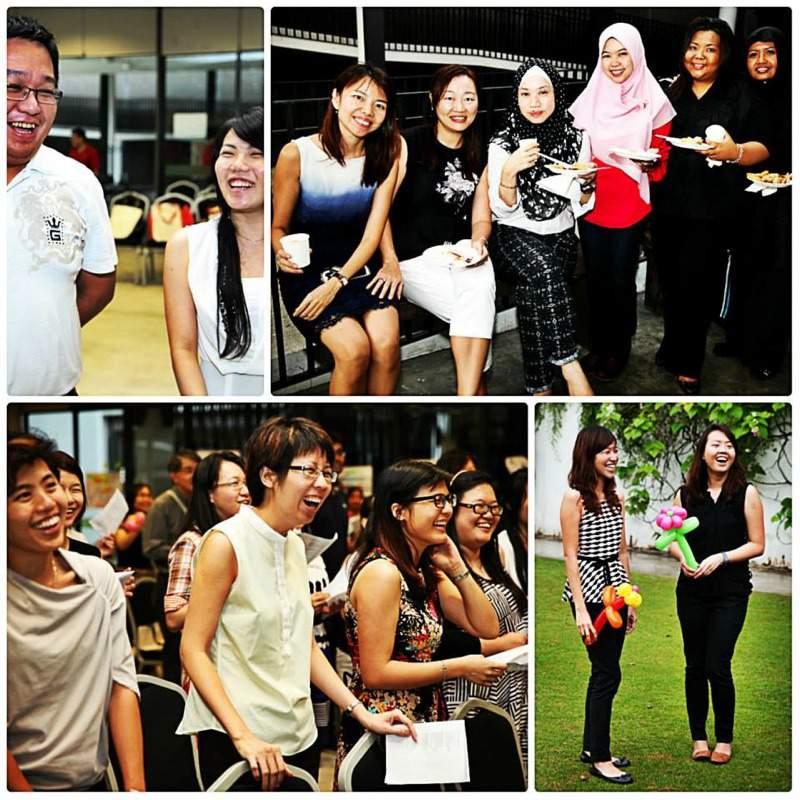

How can I help students to be comfortable working with things unfamiliar to them (e.g. abstract ideas, not having an immediate answer to an existing problem)
How is this pedagogy, art activity or question helpful for

Are students able to assess their own learning/progress (Mrs Jane Grosse, Rosyth School)


My hopes for the future of Singapore’s Art Education - Our children in this new generation need a platform for communication, cultural understanding and exploration. The Arts would be a good platform for these interactions. The future of Singapore’s Art Education can aim to provide them with opportunities to develop their creative and cognitive skills as well as to strengthen their problem-solving and critical thinking skills. The Arts is also an avenue for them to develop their imaginations.Besides survival, it is more important that these children deserve living a life rich in meaning. Art educators can aspire to bring the children through a journey of change where they are challenged to look at things in different perspectives and can appreciate life for all its beauty. (Mdm Aliah Bte Hanim, Queenstown Primary School)
Above: Visual scribing done by teacher-leaders during the recent Celebracion at Hort Park

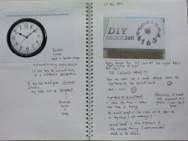
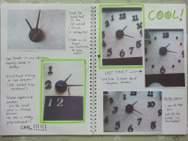



The ATPP course ignited my interest in art-making. Through this whole journey, I experienced a mixture of feelings. Starting the first artwork was most difficult. Questions like the theme I should explore, the medium to be used, how best to present my work kept popping up in my mind. At times, I felt it was so exasperating as well as upsetting. But as I learn to live with ambiguity and follow my heart, I realised that many of my ideas revolved around my love for my family. As I made the decision to embark on the family theme which I feel a lot for, many ideas and inspiration came along the way. (Mdm Pauline Ang, Clementi Primary School)
We are now into our 5th run of ATPP, participants will be celebrating their journey with STAR through an art exhibition opening on 10 Jan 2014 at Malan Road Campus. The pedagogical exhibition mentioned in our cover story will also be held concurrently. More information will be announced.
The next run of ATPP commences in April 2014. Teachers who are interested in this programme can find out more via this link. If you have further queries, do not hestitate to contact Programme Manager, Ms Tang Hui Jing (tang_hui_jing@moe.gov.sg).
Many of our teacher participants for ATPP Run 3 are currently completing their Advance Diploma in Primary Art Education at NIE. The 21 art teachers from this diploma course are putting up an art exhibition titled ‘From a Distance 2:1’, showcasing artworks created during this 4month full-time programme. Vernissage is on 22 Nov, 1630
- 1830h; you are invited to come and support our colleagues in their exhibition opening! The exhibition will also be open to public from 25 - 28 Nov at the NIE Art Gallery. Gallery opening hours: 0930 - 1630h.



All art teachers, currently serving in MOE and affiliated schools, are invited to participate in this annual art exhibition. Your artworks can take any form and be in any medium – from drawing, painting, photography and sculpture to installation and video art as well as performance work. Interdisciplinary and collaborative artworks are also very welcome. The exhibition will take place in March 2014 at SOTA Art Gallery.
If you are keen to participate, please submit 2 visual images and an 80 – 120 word synopsis of your completed/near-completed artwork(s) by 10 January 2014. More information had been sent to all teachers via email. If you did not receive them, please contact Programme Manager, Mdm Ira Wati Sukaimi (ira_wati_sukaimi@moe.gov.sg) for more details.
In conjunction with the upcoming exhibition, STAR is organising an Artists’ Talk where three invited artists will be speaking about their craft, thought-processes, ideals and visions that have been weaved and imparted through their artworks. They are Mr Chua Chye Teck (Photography), Mr Tang Mun Kit (Assemblage) and Mr Loh Lik Kian (Ceramics).
Date : 25 November 2013 (Monday)
Time : 8:30am – 10:30am
Venue : Theatrette, Block J, Academy of Singapore Teachers, 2 Malan Road
Please email Programme Manager, Mdm Ira Wati Sukaimi (ira_wati_sukaimi@moe.gov.sg) by 23 Nov (Fri), 1200h if you would like to attend the talk.


No Country: Contemporary Art for South and Southeast Asia, the first travelling exhibition of Guggenheim UBS MAP Global Art Initiative, will open in March 2014 with exact dates and location to be announced shortly. Here are some programmes available for you and your students.
This is an exclusive programme conducted by Ms Sharon Vatsky, Director of School and Family Programs, Education, of Solomon R. Guggenheim Museum in New York.
During the workshop, Ms Vatsky will share her expertise and techniques on engaging students with art and how to best prepare your students for their upcoming visits to the exhibition. Each participant will also receive a complimentary copy of the Teacher Resource Guide.
All school groups are welcome to take up free guided tours. Educators can either request a guided visit led by a trained docent, or a self-guided visit.
Please note that pre-registration is required for both guided and self-guided school visits to the exhibition. Guided visits are subject to availability of docents.
If you did not manage to sign up for more information during the recent Arts Education Forum held at ITE Central, do email Programme Manager, Ms Grace Kwa (grace_kwa@moe.gov.sg ) for more information.